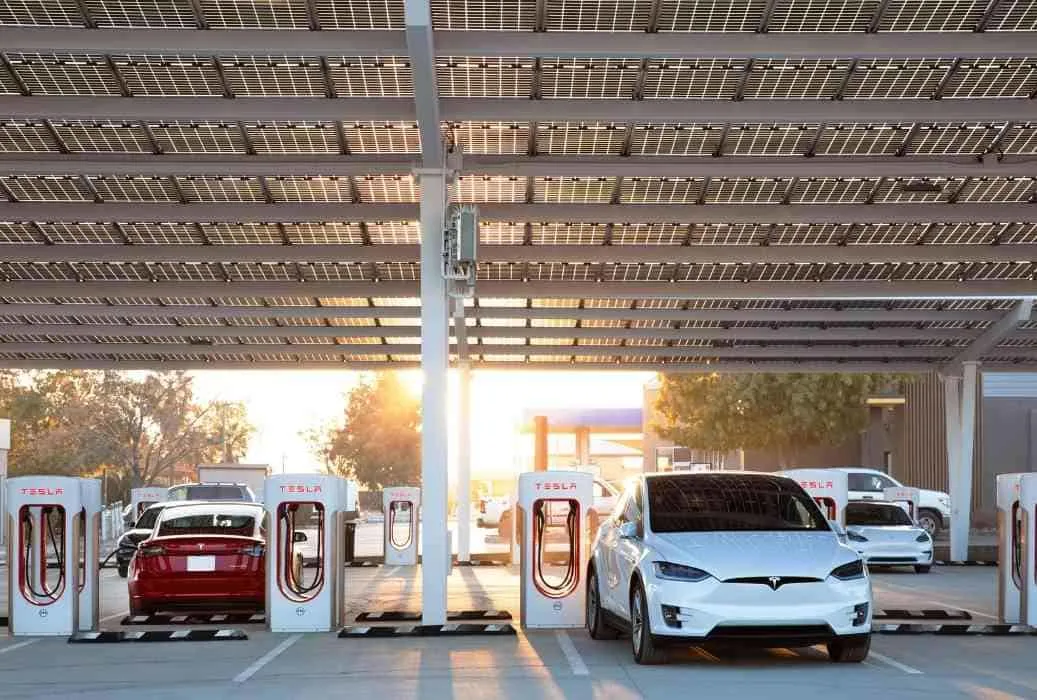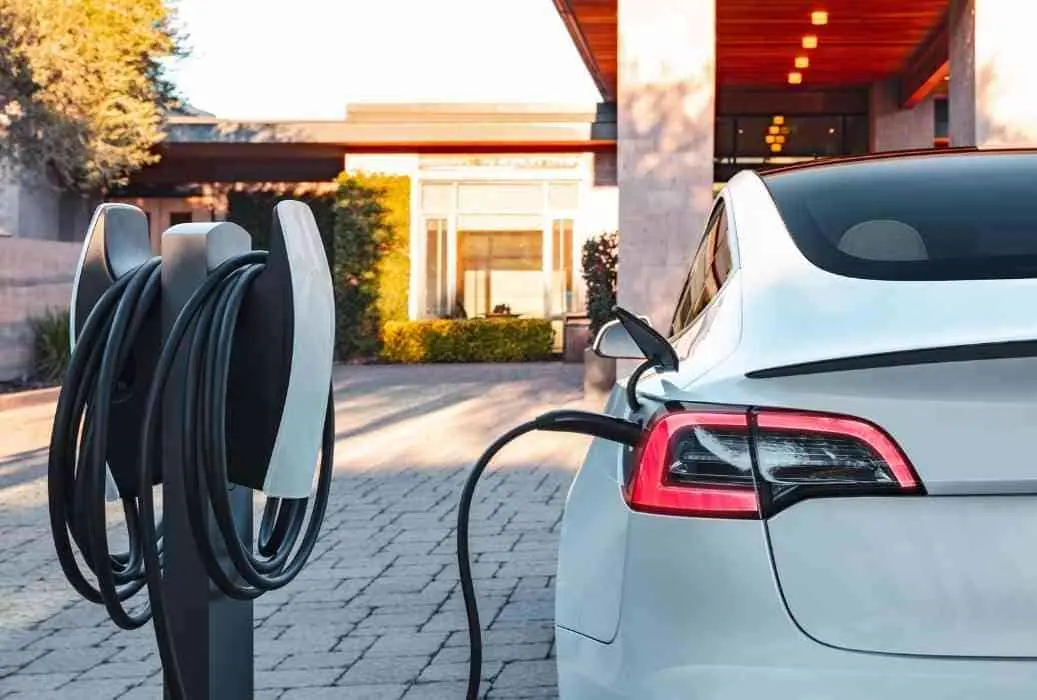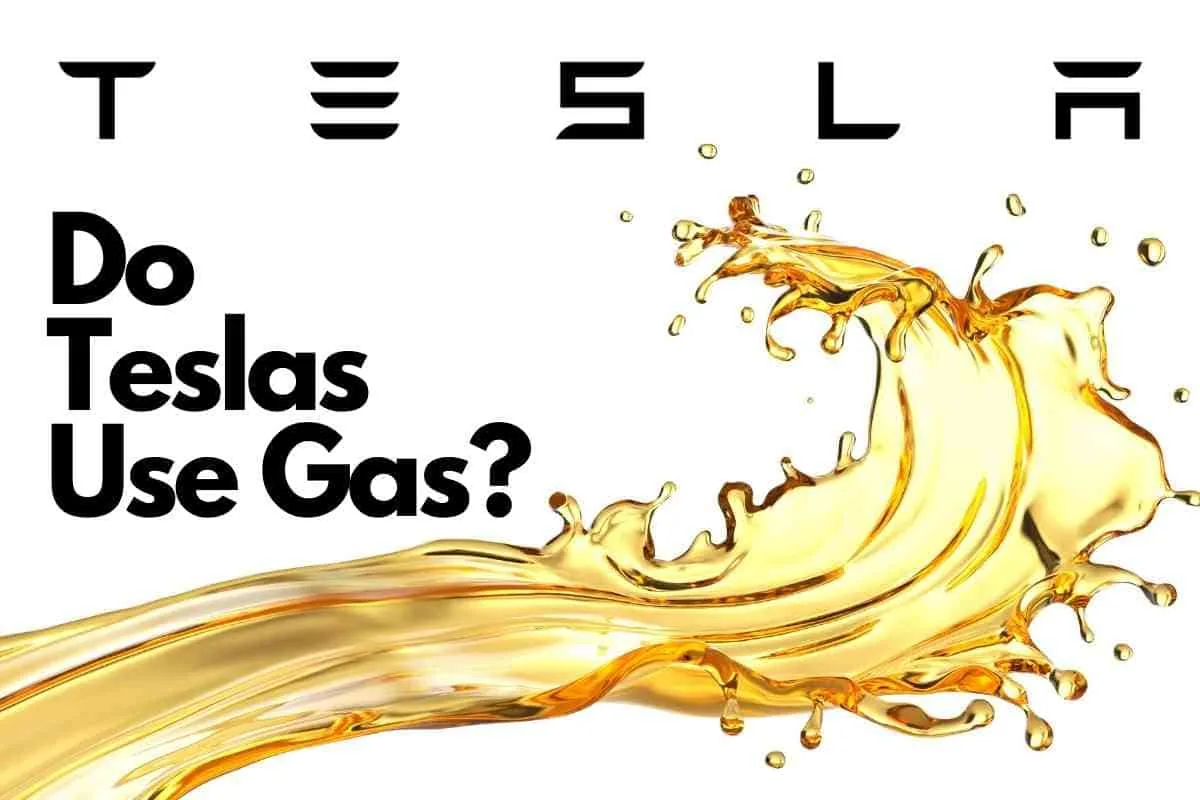If you’ve been following along with the evolution of the electric car, you’ve probably heard a lot of wild claims about how manufacturers are rolling out gas-less vehicles these days.
While many electric cars are truly, actually, 100% electric, many of them do still rely on some amount of fuel to keep them going.
But what about Tesla? Are Tesla vehicles all hybrids or do Teslas use any form of gas?
Tesla does not manufacture any vehicles that run on gasoline or any form of liquid fuel. All Teslas made today are 100% electric, and do not offer hybrid modes of operation. While it’s true that you will need to use motor oil, this is for lubrication and not fuel.
Making such high-performing vehicles completely gasoline-free is a truly amazing feat, but it wasn’t easy and it definitely doesn’t come without its drawbacks.
Keep reading for all you need to know about the revolutionary, all-electric, gasoline-free Tesla lineup.
Does Tesla Make any Gas Vehicles?
If you’re looking for a Tesla that is powered in any way, shape, or form by gasoline, you’re out of luck.
Not only does Tesla not make any gasoline-powered vehicles, but it also has no vehicles that can be powered by any type of liquid fuel.
Since Tesla has built its reputation on creating all-electric vehicles, don’t expect this to change anytime soon.
Due to the advanced technological systems found in Tesla vehicles, it would make no sense for the company to change its approach and develop cars that are solely gas-powered or are hybrid models.
Historically, the company and founder Elon Musk has been committed to producing clean energy cars.
Therefore, it would be quite a surprise to see Tesla produce anything other than a 100% electric vehicle.
Will A Tesla Save Me Money On Fuel In The Long Run?
Since gas prices can vary and actually go quite low now and then, you may be wondering if it costs more to charge your Tesla than it does to fill up the tank of a gas-powered vehicle.
Fortunately, the answer is generally no, as it tends to save you money by charging a Tesla rather than continuing to drive a gas-powered vehicle.
For example, if you own a Tesla Model X that has a range of at least 360 miles when fully charged, the cost to charge up the vehicle’s 100 kWh battery would only be about $15.29, based on the average cost of electricity in the U.S., which is $.13 per kWh.
When charging a Tesla and determining the cost to do so, we suggest you remember that you need to take into account such factors as the cost of electricity where you live, the type of charger being used for your Tesla, and how low your battery is on power when beginning the charging process.
Overall, whether you own a Tesla Model 3, S, X, or Y, the average cost to charge up your vehicle tends to range from $11.47-$15.29.
However, if you own the Long Range Variant of the Model S, that $15.29 you spend for electricity will get you up to 412 miles of range, which is extremely impressive for the current generation of electric vehicles.
For owners of the Standard Range Model 3, the cost can be even lower.
Since this Tesla has only a 50 kWh battery and a range of 263 miles, it can cost you as little as $7.65 for a fully-charged battery.
Is Electricity Cheaper than Gas?
When comparing the cost of electricity needed to charge a Tesla versus buying gas for a standard vehicle, it is like comparing apples to oranges.
As electric vehicles have continued to make their way into the mainstream auto market, numerous studies have been conducted to answer this very question.
One of the most looked-at has been from the University of Michigan, which found that the average cost to fuel a car containing an internal combustion engine was nearly $1,120 per year.
While this may not sound too bad to you, consider that the same study concluded that providing electricity to a Tesla or other electric vehicle costs on average only $485 annually.
Though the study noted that costs to operate electric vehicles vary from state to state, you should keep in mind that it found that even in Hawaii, which has the highest electricity rates in the nation, operating electric vehicles still costs much less than filling up a car’s gas tank.
Can You Use Gas to Charge a Tesla?
If you find yourself wanting or needing to use gas to charge your Tesla, the good news is that you can use a gas-powered generator.
To do so, you’ll need to have access to a newer gas generator, which can then be hooked up to your Tesla using an extension cord so that the battery can begin charging.
If you live in a remote area where you use a generator to power your home during power outages, you’ll know exactly what to do to get this process started.
Unfortunately, while you can use a gas generator to charge your Tesla, don’t expect it to give you a fully-charged battery in a matter of minutes.
In fact, it may take at least 24 hours or more to get your Tesla battery fully charged.
Along the way, you’ll need to keep refilling your generator’s gas tank, costing you more and more money.
A good alternative if you have no other option, a gas generator can be a lifesaver if you need your Tesla charged up during a power outage.
Otherwise, we suggest you stick with plugging your Tesla into your home charger or paying a visit to a Tesla Supercharger station, where you can get as much as 200 miles of range for your vehicle in as little as 15 minutes, saving you time as well as money.

What Happens if Your Tesla Runs Out of Battery?
If your Tesla runs out of battery, the simple answer is that you and your car will be going nowhere until you get your battery charged.
However, unless you simply refuse to look at your Tesla display, you should not have a problem noticing when your vehicle’s battery is starting to get low.
In the top left corner of the display, located close to your vehicle’s speedometer, you should see the battery icon, which can vary in color from green to yellow and then to red.
When you see red, it means the battery is close to dying!
To keep you and your car charged up and on the road, your Tesla will begin giving you warnings about your battery power level, and also begin pointing out the nearest charging stations you can visit to get a charge.
When doing so, this will include not only Tesla Supercharger stations but other charging stations as well.
If there is one thing you don’t have to worry about in this situation, it’s your car not having a few more miles left in the battery.
Actually, even when most Tesla models reach zero for battery power, they are built so that they often have anywhere from 10-20 miles of range left, which should allow you to get to a charging station.
Yet rather than count on this, heed your Tesla’s warnings early on and find your way to the nearest charging station for a refill of electricity.
Should you find yourself out of battery power and not be near a charging site, your Tesla will begin to slow down until it reaches 15 mph but will give you enough time to pull off the road to a safe spot.
If it dies, it will automatically put itself into park mode.
When this happens, you’ll need to contact roadside assistance to get your Tesla towed to a charging station or your home, whichever you prefer.
When towing becomes necessary, have your Tesla loaded onto a flatbed truck, rather than towed by its axle.
If you don’t, you could risk damaging the car, making a tough situation that much worse and certainly more expensive.

Does My Tesla Have an Engine Like Other Cars?
While you probably assumed your Tesla does contain an engine like standard gas-powered vehicles, you may be surprised to learn that it actually does not.
Rather, your Tesla has a motor. If you thought a motor and engine were the same, they are not!
Used interchangeably, motors and engines are quite different.
Engines generally run on fuel such as gasoline, oil, kerosene, diesel, or other liquid forms of fuel, converting their fuel source into mechanical energy.
However, motors such as the one in your Tesla convert electricity into mechanical energy.
What’s the Most Efficient Way to Charge My Tesla?
If you want to charge up your Tesla, you have several options, although each vary with regards to their efficiency.
While a gas generator can be used, we already touched on the high costs and long period of time this will take.
If you don’t mind a slow charge while at home, you can plug your Tesla into a home slow charger via a 120-volt outlet. However, this may take 24 hours or more.
A more efficient option is the Tesla Wall Charger.
This charger, which is wired directly into your home’s electrical system, allows you to plug in your Tesla when you get home from work and have it fully charged by the next morning.
Of course, the most efficient is the Tesla Supercharger station. As noted earlier, you can spend 15 minutes at one of these stations and find your Tesla with 200 miles or more of range.
Expected to eventually overtake gas-powered vehicles in the coming decades, electric vehicles like Tesla are leading the way toward a brighter automotive future.
